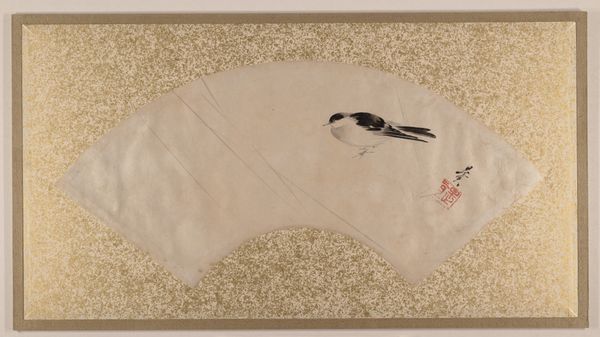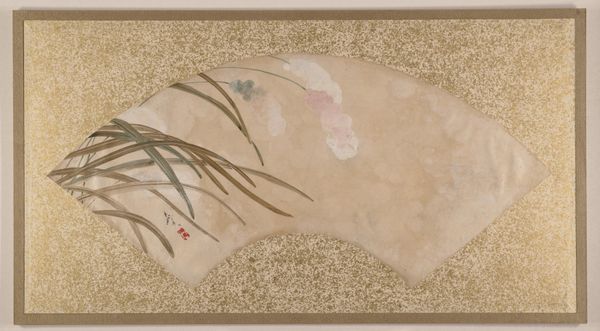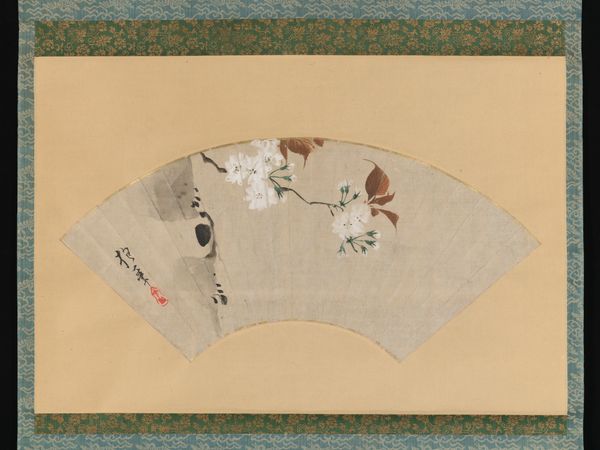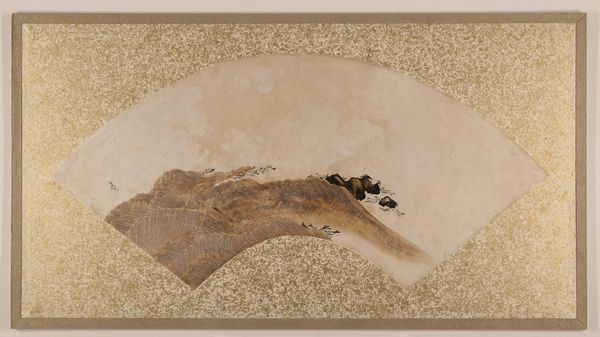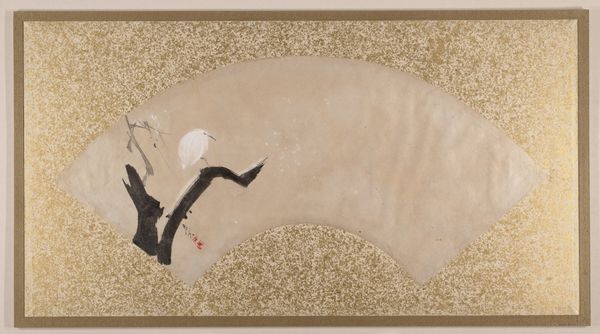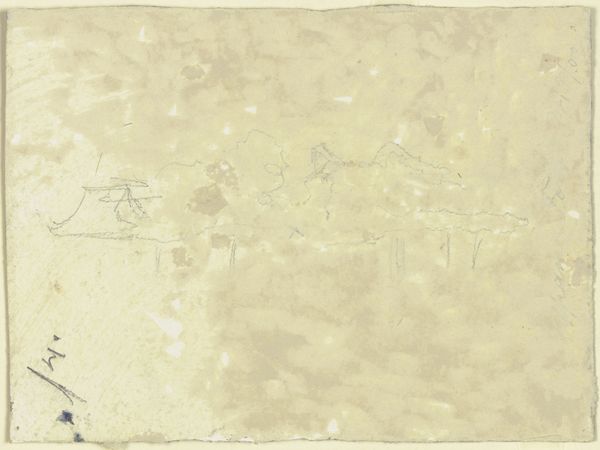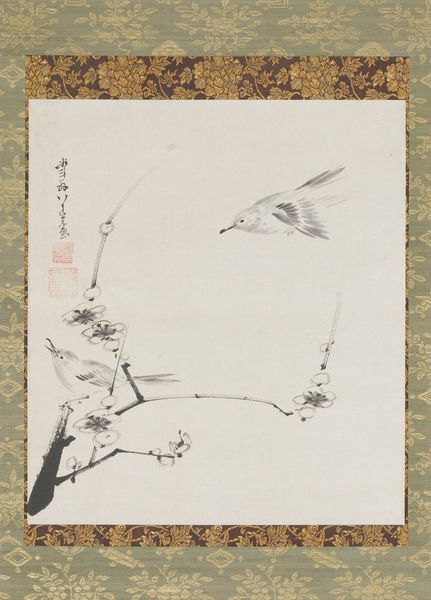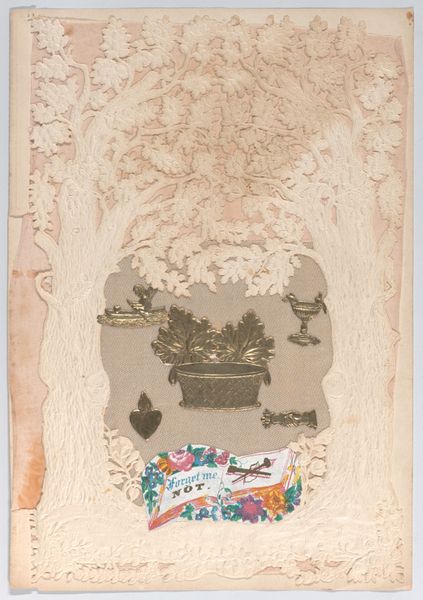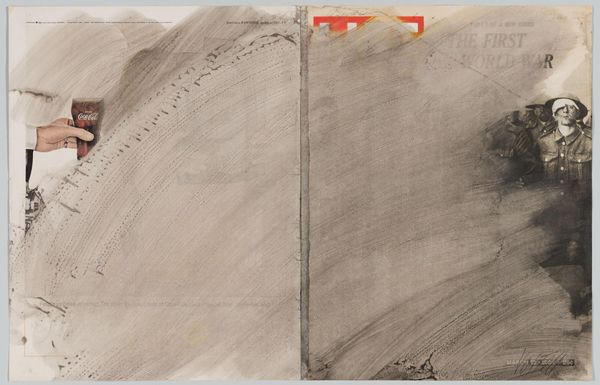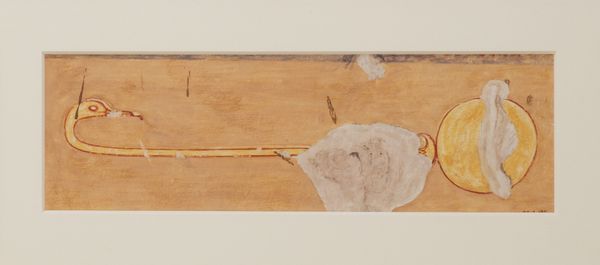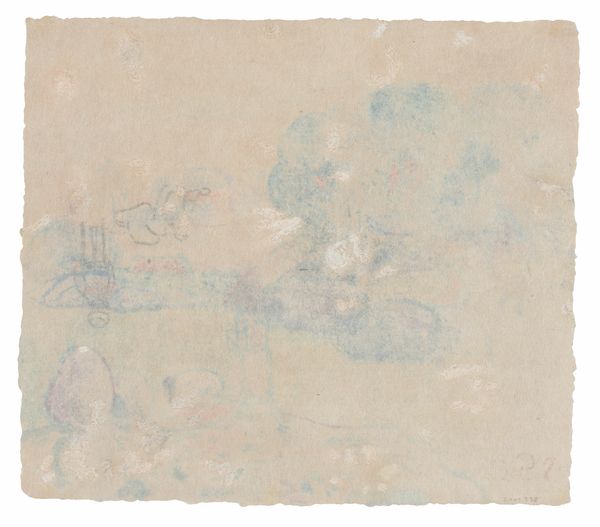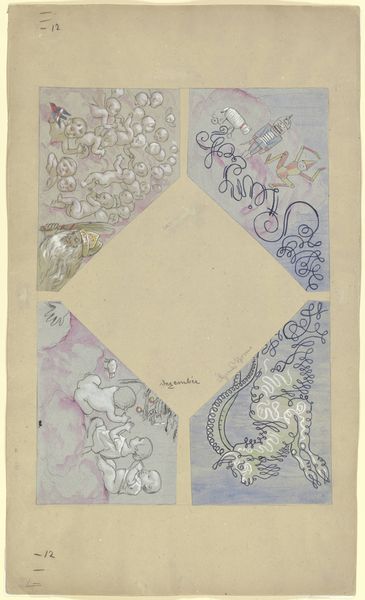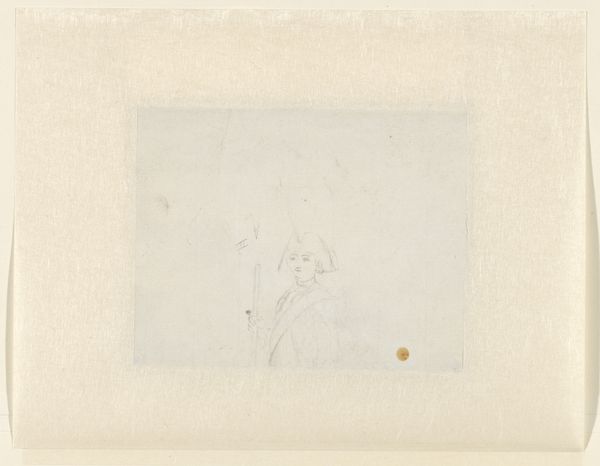
tempera, watercolor, impasto
water colours
tempera
asian-art
landscape
watercolor
impasto
underpainting
24_meiji-period-1868-1912
Dimensions: Overall: 13 x 23 5/8 in. (33 x 60 cm) Image: 7 7/16 x 20 5/8 in. (18.9 x 52.4 cm)
Copyright: Public Domain
Editor: Here we have Shibata Zeshin’s *Three Landscapes*, likely created sometime between 1867 and 1891. It uses watercolor and tempera, among other media. I’m immediately struck by the sense of layering and how the fan shape is set against the golden background. What do you see in this piece, especially regarding the combination of the landscapes and that symbolic fan shape? Curator: The fan shape itself is laden with cultural significance in Japan. Consider it not merely as decoration, but as a symbol of spreading good fortune. Do you notice how the three landscapes seem almost like fragmented memories, each distinct yet connected on the surface of the fan? Editor: Yes, they seem like snapshots. The blue square reminds me of water, the other like mountains… why present them this way, like deconstructed scenes? Curator: Think of the landscapes as emotional states rather than literal places. Water often symbolizes tranquility and reflection, mountains resilience, perhaps even solitude. Presenting them on a fan – an object used to both conceal and reveal – suggests a deliberate curating of one’s inner world for public consumption. Editor: So, almost a controlled presentation of emotions? Curator: Precisely. The artist carefully presents these emotional symbols. Even the layers – impasto over underpainting – convey a history, much like our personal history shapes who we are. It is an interplay of cultural memory and individual experience. What's your takeaway after thinking about the symbolism at work here? Editor: I now see the piece as a more nuanced exploration of emotion than I initially realized. It's like Zeshin is inviting us to consider how we curate our own emotional landscapes. Curator: Indeed, and how culture subtly guides the symbols we choose. The image resonates through cultural continuity, showing us that expressing emotions can be both intimate and reflective of shared history.
Comments
No comments
Be the first to comment and join the conversation on the ultimate creative platform.
